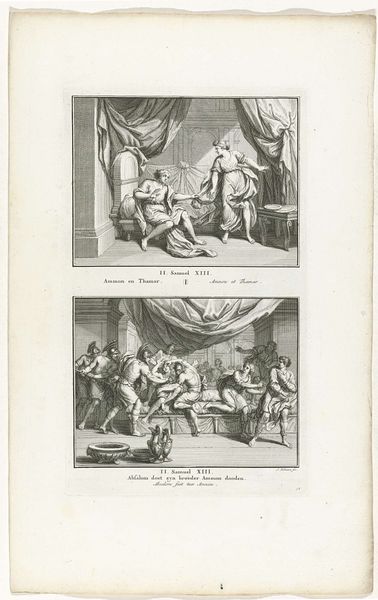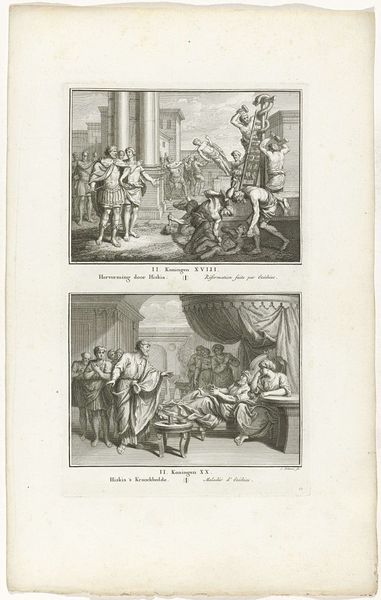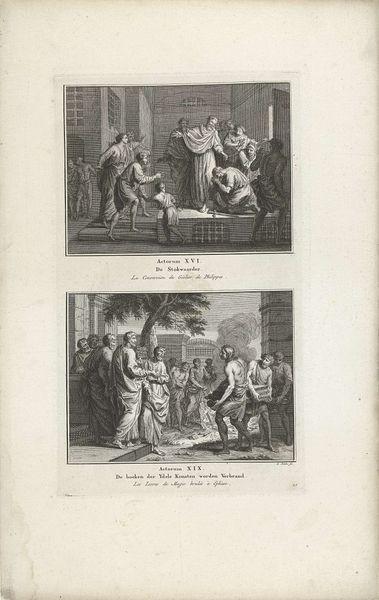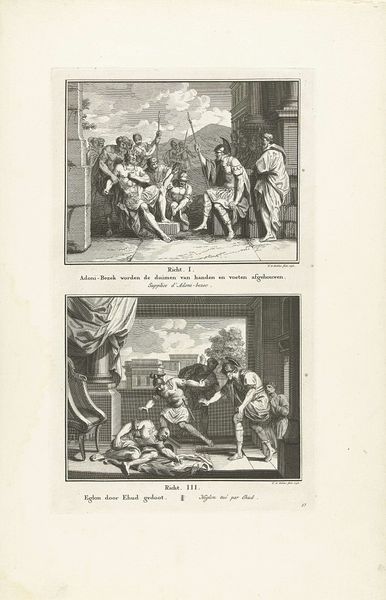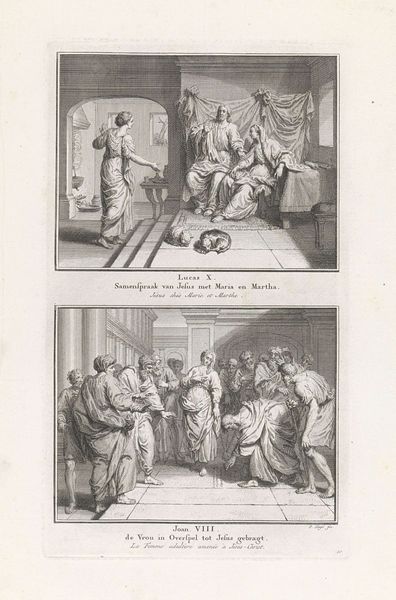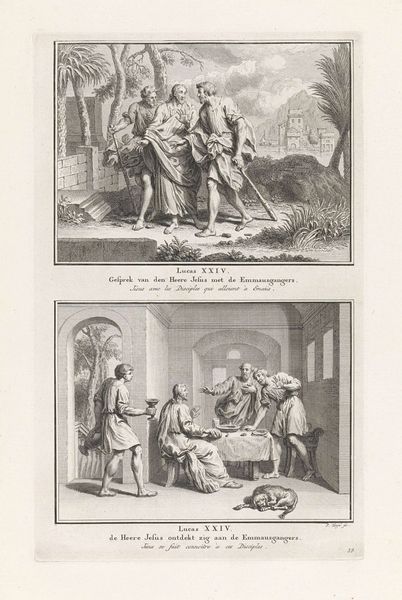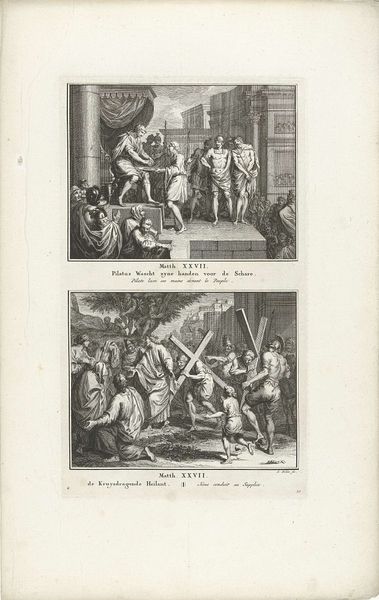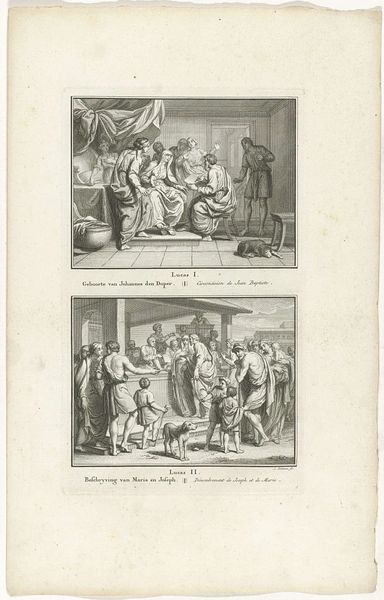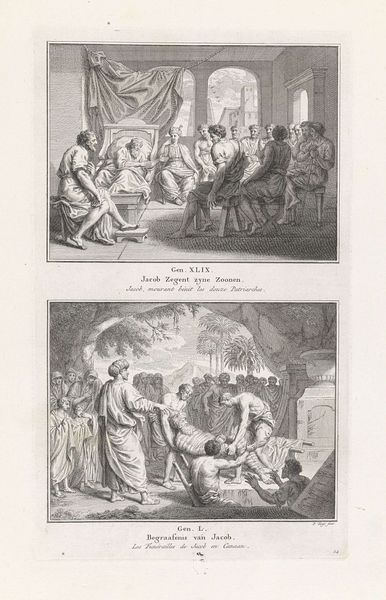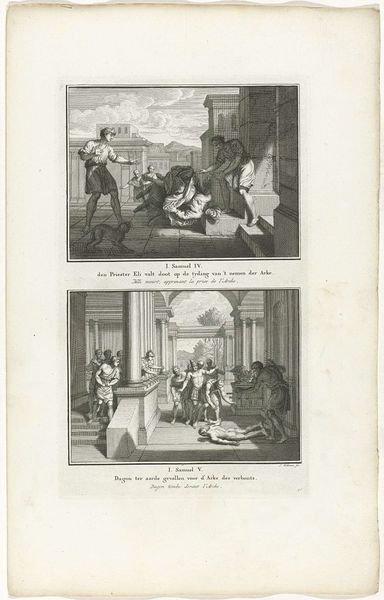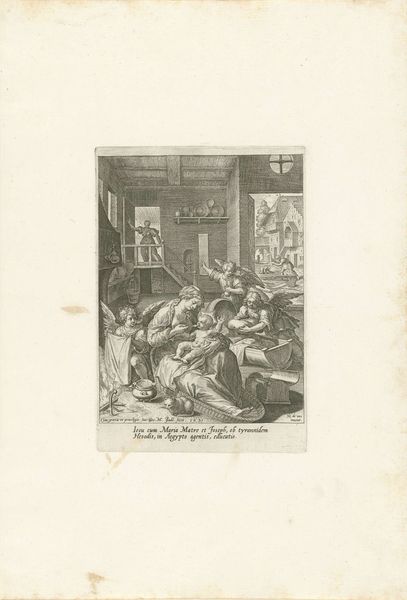
Dimensions: height 320 mm, width 187 mm
Copyright: Rijks Museum: Open Domain
Editor: This is Jacob Folkema's 1791 print, "Denial of Peter and the Mocking of Christ." It's made of paper, and the old engraving style really creates a sense of drama. I find the contrast between the two scenes intriguing. What compositional elements stand out to you? Curator: Formally, the division into two distinct panels presents an immediate comparative opportunity. Consider how the artist has structured each scene. Notice the distribution of figures, the use of light and shadow, and the direction of lines. How do these elements contribute to the narrative and emotional impact of each scene independently, and then comparatively? Editor: I see. The top scene, Peter's denial, feels more contained, almost claustrophobic. The bottom scene, Christ's mocking, is more open, with figures surrounding him. What would you say about that? Curator: Precisely. Examine how Folkema utilizes linear perspective and arrangement. In the upper scene, lines converge towards a central vanishing point near the fire, focusing our attention on the emotional confrontation. In the lower register, the composition is more dispersed, implying a broader sense of communal cruelty. Editor: So, by focusing on the formal elements – lines, perspective, arrangement – you are seeing the artistic intent beyond just the biblical story? Curator: Yes. Note also the variations in line weight and density across the print. Heavier lines define contours and emphasize certain figures, while lighter, finer lines suggest textures and gradations of light. This creates visual interest and depth within a monochromatic medium. Editor: This makes me appreciate the craftsmanship. I never really thought about an engraving like this being a composition with deliberate lines, textures, and contrasting sections, I thought more about the theme and meaning! Curator: Precisely. Now, consider the formal strategies Folkema employed; meaning is produced not simply through the representation of an event, but through considered formal arrangement. Editor: This close examination changed my understanding! Now I see so many relationships of balance and intent. Curator: Indeed. Shifting the emphasis to formal relations grants one entry into greater meaning, where our analysis began, thus closing a circle of interpretive depth.
Comments
No comments
Be the first to comment and join the conversation on the ultimate creative platform.
